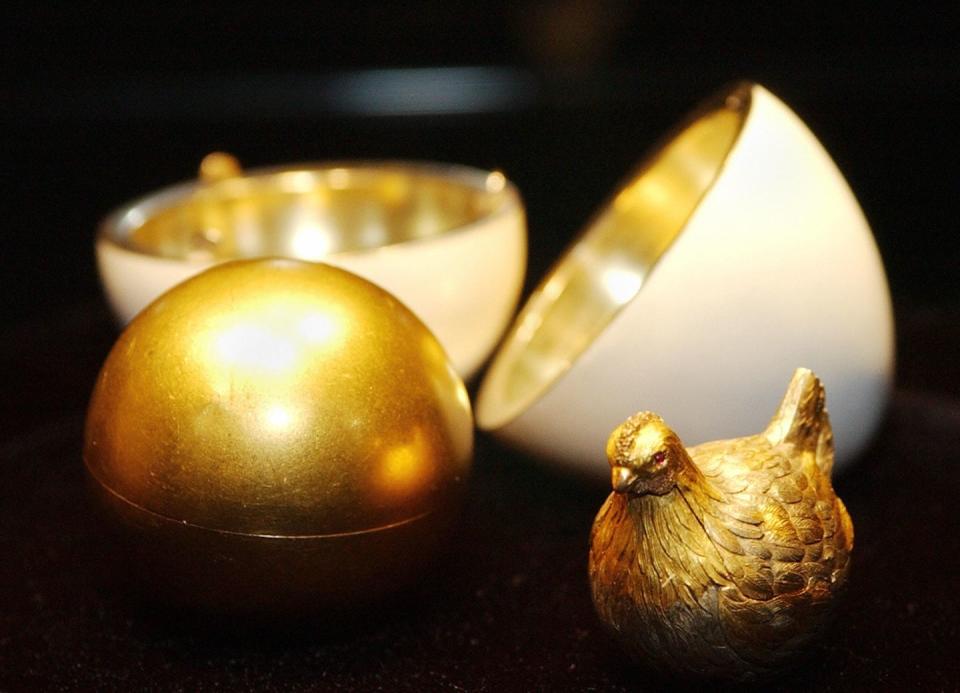The Enduring Mystery of the Romanovs’ Missing Faberge Easter Eggs

In 1885, Tsar Alexander III landed on the perfect Easter gift for his wife, Empress Maria Feodorovna: a bespoke egg commissioned from Peter Carl Faberge, a master goldsmith of the jewelry company House of Faberge. The Hen Egg was a simple white enamel egg that twisted apart to reveal a golden yolk, the yolk opened to show a golden hen, and in the hen was a diamond crown and a tiny ruby pendant. The materials were costly, but the magical surprise was priceless.

The empress was so delighted that the tsar gave a royal order to the House of Faberge and from that year forward the opulent eggs were made for the Russian court every Easter.
His son, Nicholas II, continued the tradition, giving one egg to his mother and one to his wife Alexandra every year, each more elaborate than the last.
The Faberge eggs are world renowned today, synonymous the Romanovs’ lavish lifestyle, but at the time hardly anyone outside the royal court knew they existed. During the Bolshevik’s February Revolution, the eggs were taken from the palace, and carefully packed and stashed at the Kremlin in Moscow.
The Russian government later sold many of them when it ran low on funds. Although there are believed to be close to 70 eggs created, today only 46 imperial eggs and 11 other eggs are known to survive.

The "other" eggs were commissioned by aristocrats in the Russian court, like the Yusupovs, a prominent Russian noble family, known for their extreme wealth—they were far richer than the Romanovs. The Yusupov egg, commissioned by Prince Felix Yusupov I, was gold enamel laden with rubies and emeralds, with a clock hidden inside.
The family met a better fate than the Romanovs: Prince Felix Yusupov II, who married Nicholas II’s niece, Irina Aleksandrovna Romanova, avoided assassination and instead murdered Grigori Rasputin. Still, their eggs were confiscated by Russian officials and the Yusupov Egg was later sold to London art dealers sometime in the 1940s. Michel Pamigiani of Parmigiani Fleurier restored the Yusupov egg in 2007.

Occasionally, a missing egg magically appears: In 2015 a scrap dealer found one at a junk sale, paying about $14,000 for it. He planned to scrap it for its parts until he searched online for “Vacheron Constantin,” which was engraved on the clock inside, and “egg,” which lead him to a 2011 newspaper article about the search for the Third Imperial Easter Egg. He had the egg appraised and it turned out to be the missing egg, worth $33 million.
With as many at least ten eggs still out there, the greatest royal Easter egg hunt in history continues.
You Might Also Like
